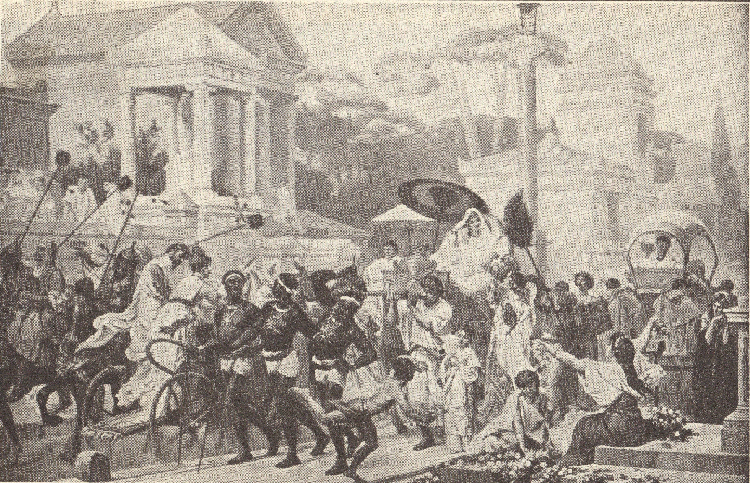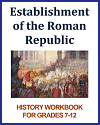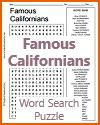| Street Scene of Ancient Rome |
|---|
| www.studenthandouts.com ↣ World History ↣ Ancient Rome ↣ Ancient Rome Maps & Pictures |
 |
|
Roman street scene. Painting by Gustave Boulanger (French, 1824-1888). Click here to enlarge.
Ancient Roman streets, known as viae in Latin, were a critical part of the Roman road network and played a significant role in the functioning of the Roman Empire. They were constructed with care and engineering expertise to ensure durability and efficiency. Pavement: Roman streets were known for their well-constructed pavements. They typically had layers of stone, gravel, sand, and concrete, which created a sturdy and enduring surface. The top layer often consisted of large stone slabs or cobbles for a smooth and durable road. Width: Roman streets varied in width, with major thoroughfares being wider than smaller roads. The width was generally determined by the expected traffic and the importance of the road. Curbs and Sidewalks: Many Roman streets had raised curbs or sidewalks on either side to separate pedestrian traffic from wheeled vehicles. These curbs, often made of stone or concrete, helped protect pedestrians and control the flow of traffic. Drainage: Roman engineers were adept at ensuring proper drainage on their streets. Streets had a slight incline from the center to the sides to allow rainwater to flow into channels or underground drainage systems. These channels, known as gutters, helped prevent flooding and erosion. Milestones: Along major roads, the Romans placed milestones to mark distances. These stones provided travelers with information about the distance to important destinations, cities, and landmarks. Signposts and Waystations: Roman roads often had signposts and waystations, known as mansio, at regular intervals. These provided travelers with information about the road ahead and offered rest stops with accommodations, food, and fresh horses for those traveling long distances. Street Names: Some Roman streets had names, especially in cities. They were often named after their destination or a notable feature along the road. Road Network: The Romans constructed an extensive network of roads, with the most famous being the Via Appia and the Via Flaminia. These roads connected major cities and military outposts throughout the empire. Military Significance: The road network was of great strategic importance for the Roman military. It allowed for the rapid movement of legions, supplies, and messengers throughout the vast empire. Urban Streets: Within Roman cities, streets varied in size and quality. Major cities had wide, well-paved streets, while smaller towns might have narrower and simpler roads. Traffic Control: Traffic in Roman cities could be chaotic, so there were often rules and regulations to manage it. The circulation of chariots, wagons, pedestrians, and animals had to be organized to prevent congestion and accidents. Maintenance: Roman streets required regular maintenance to keep them in good condition. Work crews were responsible for repairing damage and maintaining the road surface. Roman roads were a key element in the success of the Roman Empire, facilitating trade, communication, and the movement of armies. Their design and engineering techniques had a lasting influence on road construction throughout history, and some Roman roads are still in use today. |
 |  |  |  |  |
| Ancient Rome Books and Films | Ancient Rome Outlines and PowerPoints |
| Ancient Rome Maps and Pictures | Ancient Rome Study Games |
| Ancient Rome Miscellany | Ancient Rome Worksheets |
| www.studenthandouts.com ↣ World History ↣ Ancient Rome ↣ Ancient Rome Maps & Pictures |








